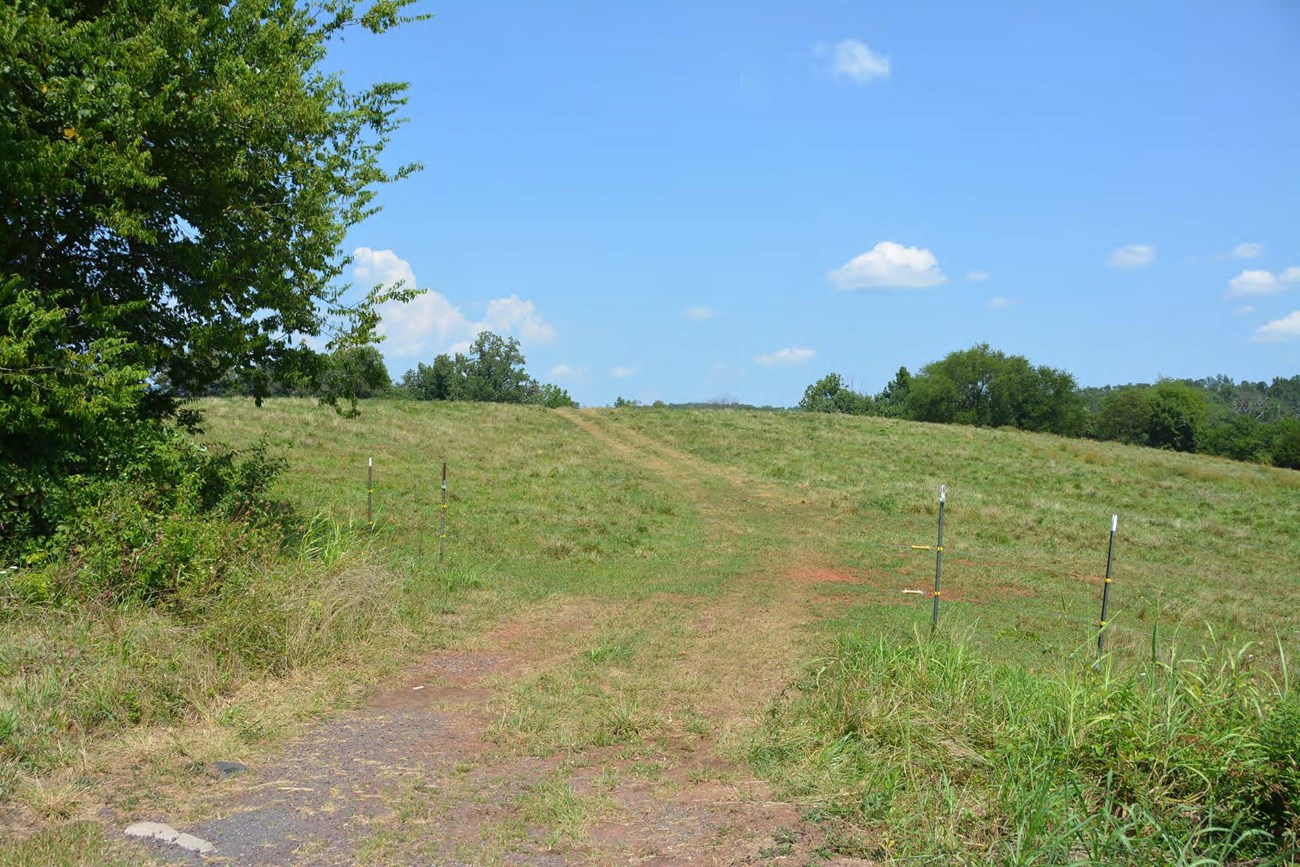Last updated: February 21, 2023
Article
The View from Pegram’s Battery: Preserving Cedar Mountain Battlefield

Image courtesy of the American Battlefield Trust/Brian Jones.
Recipient: Virginia Department of Conservation and Recreation
Amount: $257,757
Acres: 44.75
The thermometer reached toward 100 degrees in Culpeper County, Virginia, in the mid-afternoon on August 9, 1862. Private William F. Goodhue of the 3rd Wisconsin Infantry regiment noted that "[the sun's] burning rays stung and blistered our unprotected and upturned faces with all the fervor of a mustard plaster." A month before, after beating back the Army of the Potomac outside of Richmond, Gen. Robert E. Lee had dispatched Maj. Gen. Thomas “Stonewall” Jackson and 14,000 Confederate troops to take the fight to Union-held northern Virginia. Jackson’s troops tangled with the newly constituted Army of Virginia, led by Maj. Gen. John Pope, near Cedar Mountain late that afternoon and narrowly prevailed over their outnumbered adversaries.
Pope’s incendiary policies towards civilians and inflammatory comments to his own troops had stoked the flames of resentment throughout the long, hot summer. The close Confederate victory here ignited the 1862 Northern Virginia campaign that brought the fighting back to Manassas later that month and seared the Civil War’s costs into public imagination: some of the earliest photographs of battlefield destruction from Mathew Brady’s studio and Clara Barton’s ministrations to the wounded on her first official field duty with the US Army shed light on the national trauma that burned through lives and landscapes for more than four years.
In the early 1900s, Judge Daniel A. Grimsley placed 56 stones at Cedar Mountain to mark the positions of Union and Confederate units at the beginning of the battle. Nearly a century later, the American Battlefield Trust acquired 152 acres of the battlefield. With a 2023 Battlefield Land Acquisition Grant awarded by NPS’s American Battlefield Protection Program, the Trust will protect another 45 acres at Cedar Mountain where Confederate Capt. William Pegram’s battery engaged in an hour-long artillery duel that ended the battle and propelled the fighting towards the coming horrors at Antietam. This grant sustains long-standing collaborative conservation efforts among the Trust and Virginia’s Departments of Conservation and Recreation and Historic Resources to ensure that these sites of armed conflict are neither gone nor forgotten.
Battlefield Land Acquisition Grants from the NPS American Battlefield Protection Program empower preservation partners nationwide to acquire and preserve threatened Revolutionary War, War of 1812 and Civil War battlefields. In addition, the program administers three other grants: Preservation Planning Grants, which are open to all sites of armed conflict on American soil, the newly authorized Battlefield Restoration and Battlefield Interpretation Grant programs. This financial assistance generates community-driven stewardship of historic resources at the state, tribal and local levels.
Get Your Project Funded
Check out the American Battlefield Protection Program's website for more information about various grant offerings and eligibility.
